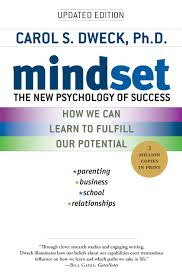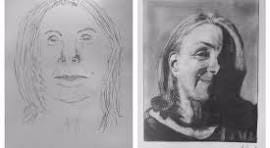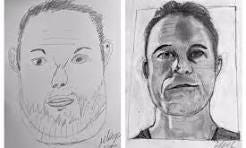How to become artistic (#87)
Psychologist Carol Dweck on applying the "growth mindset" to drawing
Do you believe that most skills are innate or learnable?
Do you believe that painters, dancers, sprinters, singers, or standup comedians are born—that, say, 90% of their ability was innate— or that it can be made—starting with average gifts, you can chose to become great?
For most of my life, I was in camp #1. I believed certain things could improve, no doubt, but that things like artistic ability, speed, or humor were not that moveable.
When I was 12, for example, I learned I couldn’t draw. In Mrs P’s 6th grade art class, struggling to produced an elephant on the page, it became clear I didn’t have the gene. It was that I wasn’t good at drawing yet. It wasn’t that I just need to practice. I lacked the talent. Some people can draw and some people can’t, and that’s that.
And I believed that for the next 20 years.
Then, around 2015, I picked up a book called, Mindset: The New Psychology of Success. The book is by Carol Dweck, a Stanford psychologist, and it forced me to rethink this position.
If I were to pick 10 books to gift myself at 16, this book would be one. Mindset completely changed my perspective on my ability to learn and grow.
No section had a larger impact than the one on drawing.
And that’s the subject of today’s OGT.
It’s not drawing skills, it’s seeing skills
When it comes to artistic ability, it seems more like a God-given gift…people seem to naturally draw well or poorly.
This is the belief that I had in middle school.
Dweck had that same belief. She believed you could draw or you couldn’t, and there wasn’t really any changing that.
Even I believed this. While some of my friends seemed to draw beautifully with no effort and no training, my drawing ability was arrested in early grade school. Try as I might, my attempts were primitive and disappointing. I was artistic in other ways. I can design, I’m great with colors, I have a subtle sense of composition. Plus I have really good eye–hand coordination. Why couldn’t I draw? I must not have the gift.
Dweck had what her research would describe as a “fixed mindset.”
She viewed artistic talent largely as unchangeable; a genetic gift, not malleable starting material. And then she read a book called, Drawing on the Right Side of the Brain.
Betty Edwards is an art teacher who teaches “non-artists” how to draw. Students come to her thinking they can’t draw (they can’t, see below), but by the time they leave days later, they can.
Edwards embodied what Dweck describes as a “growth mindset”— the perspective that nearly any skill can be learned. Dweck explains:
Edwards agrees that most people view drawing as a magical ability that only a select few possess, and that only a select few will ever possess. But this is because people don’t understand the components—the learnable components—of drawing.
Then came the part that unlocked my own fixed mindset.
To get better at drawing—and a lot of things, Dweck’s research would later show, and my experience would later teach me—is just as much a matter of drawing (the gift or performance), as it is a matter of your perception.
Actually, she informs us, they are not drawing skills at all, but seeing skills.
They are the ability to perceive edges, spaces, relationships, lights and shadows, and the whole. Drawing requires us to learn each component skill and then combine them into one process. Some people simply pick up these skills in the natural course of their lives, whereas others have to work to learn them and put them together.
But as we can see from the “after” self-portraits, everyone can do it.
These are actual student drawings from the class:
Just learning how to “see”—understanding skills and performance broken into components—made drawing learnable.
And it translates to nearly any other skill.
Here’s what this means: Just because some people can do something with little or no training, it doesn’t mean that others can’t do it (and sometimes do it even better) with training. This is so important, because many, many people with the fixed mindset think that someone’s early performance tells you all you need to know about their talent and their future.
Actually, it just tells you what they could—if they really, really wanted to—learn better.
And maybe become great.
The OGT: Perspective = possibility
Me and Dante
Dante was the running back on my high school football team.
Dante was strong with only average speed. But, while his speed was not impressive, his mindset—it turned out— was.
Coach Bosley implemented a program called Bigger. Faster. Stronger. It involved a lot of heavy lifting, plyometrics (drills for explosion), and speed work (sprinting, cone drills, etc). Coach B believed that he could significantly improve any player’s strength, agility, or speed over the course of the summer and the season (~6 months).
I was skeptical, but Dante bought in. And with that commitment, and a ton of hard work, by the end of the season, he transformed. Dante went from someone with average RB speed to the fastest kid on our team. In June, he ran a 4.79 40-yard dash. By December, he clocked a 4.55. If you know anything about the 40, you know this is a massive change. It’s the difference between a backup and a star.
I was inspired. The next summer, I followed Dante around. I put the work in that summer of my senior year—heavy squats, running with parachutes, learning sprinting technique. It worked. I went from a pathetic 4.93 to a moderately defensible 4.78.
This was my first lesson in one’s ability to improve what seem to be innate skills. But there was a problem: I chalked it up to an isolated incident. Sure, you could get faster, but your artistic skills, humor, coordination, and singing ability—that’s fixed.
It was those beliefs that were shattered by Dweck.
First, it made me realize I had an issue at all. Though I believed athletic skills could be gained, I didn’t believe it about singing, art, or comedy. I was still partially fixed.
Second, it inspired me to grow. I believed I could be an artist. I believed I could learn to sing or write or even draw. I started writing that year. I signed up for dance lessons the next, and the following, I took singing lessons.
Third—and this is critical for anyone who wants to maintain or grow a belief—I’ve sought out and seen examples everywhere of people deciding they could learn something, and doing it. They start out bad; and six or twelve or 20 months later, they’re good.
Famous Examples
“When people say, artists are born with talent, you’re not. You have to really learn and really practice,” said Ed Sheeran. Here’s his proof. Listen to an early version of him singing.
Then understand that he played 10-20 shows per week for a decade.
Some more famous examples1:
Author Michael Lewis learned to sing
Adam Grant learned how to dive.
Dan Pink, in his book A Whole New Mind, goes to Edwards’ class and learned how to draw (below)
Your Choice From Here
It’s possible to find holes in Dweck’s research.2
You can spend time figuring out where this doesn’t work or that it doesn’t apply to you. That there’s no way you could become a good singer with voice lessons. Even with coaching, desire, and practice, you’re telling me you could become a great comedian or painter or public speaker? Not a chance.
Or, you can spend timing changing how you think.
You could decide to seek out examples of it working. You could read Dweck’s book. And then you can take that new perspective, and go learn how to do something you always wanted to, but felt was unavailable to people like you. People without the talent.
When you’re open to that possibility, Dweck taught me, everything changes. You realize it’s not about what you are as much as it’s about what you see and then do.
The last part is this: decide what do you want to do, find a coach or a youtube video or someone who did it.
Then, go do it.
Sorry they’re all men.
In fact, some of the studies have proven hard to replicate. Others have shown mixed results.








